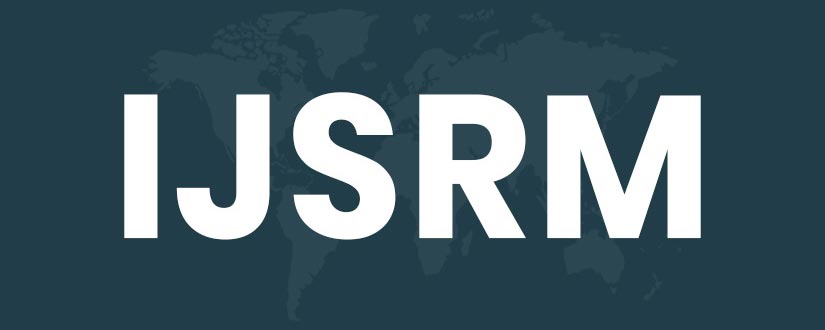Papers must be published in English, Times New Roman style, font 10. Preferably, the length of the paper should not exceed 8000 words. Manuscripts should be double spaced, with margins of at least 2.5cm (one inch) on all sides. All pages should be numbered consequently. Title and subtitles should be short. References, tables and figures should be printed on separate pages. Tables and figures should be numbered consequently in the text in Arabic numerals (please indicate where images should be placed).

The first page of the manuscript should contain the following: 1) the title 2) the name(s) and institutional affiliation(s) of the author(s) 3) a footnote should give the name, address, and telephone and fax numbers of the corresponding author, as well as an e-mail address.
On the second page of the manuscript should appear: 1) the title; 2) an abstract of not more than 100 words; 3) up to five key words.
Moreover, authors are required to categorize the paper under one of these classifications:
- Research paper
- Viewpoint
- Technical paper
- Conceptual paper
- Case study
- Literature review
- General review.
References
References, citations, and general style of manuscripts should be prepared in accordance with the APA Publication Manual, 4th ed. They should include the author name(s) and year of publication. The author should make sure that there is a strict one-to-one correspondence between the names and years in the text and those on the list. The list of references should appear at the end of the main text (after any appendices, but before tables and figures). Notes or Endnotes should be used only if absolutely necessary and must be identified in the text by consecutive numbers, enclosed in square brackets and listed at the end of the article.
Illustrations
Illustrations will be reproduced photographically from originals supplied by the author; they will not be redrawn by the publisher. Digital files are recommended for highest quality reproduction. The illustrations should not be inserted in the text.
Colour illustrations
Colour illustrations will be considered for publication; however the author will be required to bear the full cost involved in colour art reproduction
Proofs
Page proofs are sent to the designated author.They must be carefully checked and returned within 48 hours of receipt.
All authors must declare they have read and agreed to the content of the submitted manuscript and completed all the relevant journal documentation. Manuscripts may be rejected by the editorial office if it is felt that the work was not carried out within an ethical framework.
Competing interests
Authors must declare all potential competing interests involving people or organisations that might reasonably be perceived as relevant. Ethical approval for any type of research project needs to be obtained by a relevant body and a statement to this effect shown in the paper submission. This will be vetted at the review stage.
Editors and Reviewers responsibilities
Editors will blind referee all manuscripts as will reviewers, to the guidelines explicitly highlighted by COPE.
Plagiarism
Plagiarism in any form constitutes a serious violation of the most basic principles of scholarship and cannot be tolerated. Examples of plagiarism include:
Word-for-word copying of portions of another’s writing without enclosing the copied passage in quotation marks and acknowledging the source in the appropriate scholarly convention. The referencing code is not important but the referencing source is.
The use of a particularly unique term or concept that one has come across in reading without acknowledging the author or source is constituted as plagiarism. This is a difficult area to stipulate as any contribution to knowledge may infringe on other peoples’ work.
False citation: material should not be attributed to a source from which it has not been obtained. Every endeavour for correctness has to be secured, notwithstanding errors can be made.
The use of a particularly unique term or concept that one has come across in reading without acknowledging the author or source is constituted as plagiarism. This is a difficult area to stipulate as any contribution to knowledge may infringe on other peoples’ work.
Unacknowledged multiple submission of a paper for several purposes without prior approval from the parties involved. Notwithstanding that papers with similar empirical materials are submitted to differing journals.
The IJSRM adheres to all the principles of the Committee on Publication Ethics (COPE)
Key Journal Audiences
The International of Sales, Retailing and Marketing particularly encourage academics, researchers and practitioners from the Global environment to share their experience, knowledge, and practices with an international audience.
Coverage
The journal seeks to encourage and present clearly written, robustly linked, and well-argued business related topics that will bring new business practices and ideas to
- Marketing Related disciplines
- Sales and Retailing
- Human Resources and Personnel Management
- Financial applications
- Financial applications
- Economics of business and Government
- Accounting Criteria
- Banking Services
- Financial Accounting
- Innovation and Entrepreneurship
- Management Information Systems (MIS)
- Corporate Social Responsibility
- Operations and Quality Management
- Supply Chain Action
- Fashion marketing
- Fashion Procurement and design
- Hospitality and Tourism
- Leisure and Events
- Religious Tourism
- Logistics
Indexed, Abstracted and Conforms
- Cabell’s Directory of Publishing Opportunities in Management & Marketing
- Ebsco
- Zetoc (British Library)
- Cope
Application applied
- ANVUR (Italy)
- Australian Business Deans Council (ABDC) Journal Quality List
- BFI (Denmark)
- Index Copernicus (Poland)